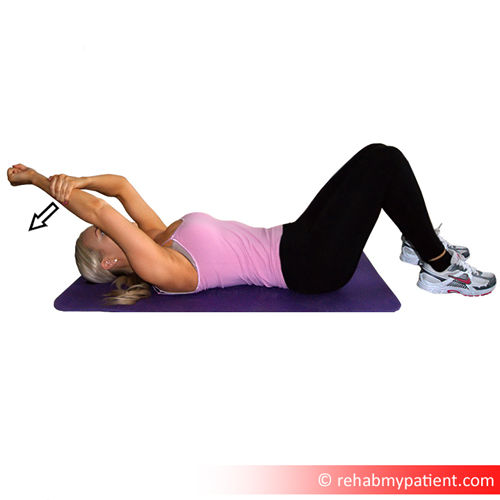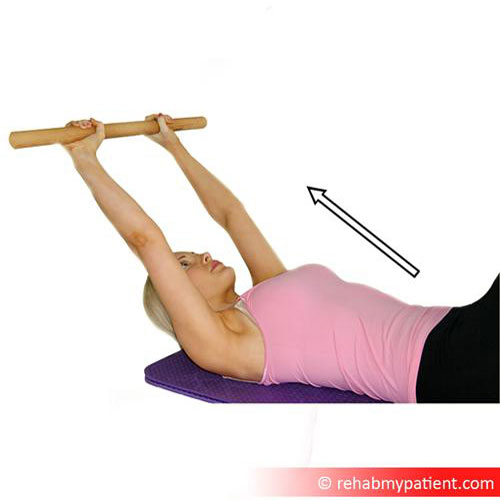
Osteoarthritis of the shoulder
What is it?
Osteoarthritis is a wear and repair process and can affect the shoulder, however, this is less common than other joints. It can lead to joint pain with limitation of movement, this can affect daily activities. Osteoarthritis is the most common type of arthritis, affecting approximately 9 million people in the UK. In general people who have osteoarthritis of the shoulder can manage well and can continue with activity and exercise without many problems.
Versus arthritis have produced a summary of ‘What is Osteoarthritis?’ please click on the video below to watch:
In osteoarthritis we see changes to the cartilage of the joint as well as other secondary changes such as inflammation. Cartilage helps our joints move freely. Changes to the cartilage can lead to pain, stiffness, and loss of movement. This can in time lead to weakness around the muscles of the joint.
It most commonly affects people older than 45 and is more common if you have a family history of it, overweight or have previously injured the joint in question. Osteoarthritis has varying degrees on functional limitation and effect on quality of life. Contrary to popular belief does not affect everyone as you get older and does not necessarily get worse.
What are the common symptoms of Osteoarthritis of the shoulder?
Symptoms of osteoarthritis of the shoulder may include gradual onset of pain and limited movement of the joint. Stiffness first thing in the morning for less than 30 minutes. Noises coming from the joint (crepitus) on movement is also common.
How to manage it?
If you think you have or have been diagnosed with osteoarthritis of shoulder from a healthcare professional there are several things you can do to help manage your symptoms and to stop them from worsening.
Exercise
Do exercises and stretches to keep the joints healthy and stimulate the natural lubricating fluid, keep it moving through as much of the range of movement that is available to you. It is important to get a balance of exercising and rest. By exercising the shoulder in this way you will not make the symptoms worse. You can improve your symptoms.
See below for examples of exercises to try. Do as many repetitions as you feel comfortable with.
Pendulum Exercises
Stand leaning on a table supporting your body weight with the other hand. Let your affected arm hang, relaxed, straight down.
– Swing your arm forwards and backwards 30 seconds
– Swing your arm sideways, left and right
– Swing your arm in a circle

Shoulder Rolls
In sitting or standing, roll your shoulders backwards and forwards

Assisted Arm Raises
Lie on your back, on your bed, with your elbows bent. Hold one wrist with your other hand. Lift the affected arm, assisting with your other hand.
If this is easy do not use the other hand to help

Table Slides
Sit or stand. Place your hands on a table. Slide your hands along the table as far as you can without lifting your shoulders

Shoulder raises
Walking your hand up the walk
Stand facing a wall. ‘Walk’ your fingers up the wall as high as possible. Reverse down in the same way.
As this gets easier use the wall less and less

Shoulder raises – forwards
If walking your hand up the walk is easy try raising your affected arm without support

Shoulder raises – sideways (assisted)
Grip one end of a stick with the affected arm. Lift your arm as high as possible, assist by pushing with the other hand.

Shoulder raises – sideways (non- assisted)
Stand or sit, with arms by your sides.
Lift your arm to the side and up with the thumb leading the movement. Lower the arm back to the starting position.

Strengthening Exercises
Isometric Exercises – external rotation
Stand or sit. Hold your upper arm close to your body with your elbow at a right angle. Try to move your hand outward, resisting the movement with the other hand. There should be no movement.
Hold for 10 seconds and repeat 3 times.

Isometric Exercises – internal rotation
Stand with your arm close to your side and your elbow at a right angle. Push the palm of your hand against the other hand. There should be no movement.
Hold for 10 secs and repeat 3 times.

Maintain good postural habits. If you spend a lot of time sat hunched forward, your shoulders drop forward, your chest muscles get tight and this may affect the ability of the shoulder to work properly, causing more pain. Change your position regularly.
Simple painkillers
Painkillers like paracetamol will ease the pain, but need to be taken regularly in order to control the pain. Always follow the instructions on the packet.
Anti-inflammatories like ibuprofen can help with swelling, and therefore help you move more freely. Follow the instructions on the packet and discuss using them safely with a pharmacist, especially if you have any underlying health conditions
However, you should not take ibuprofen for 48 hours after an initial injury as it may slow down healing.
Up to date guidelines can be found on the NHS website:
Other medicines can help to reduce inflammation, swelling and pain. You should discuss this with your GP if the simple pain relief advice does not help or if you are needing to take ibuprofen for more than 10 days.
Physiotherapy
If you find that you are not improving, some advice or treatment from a physiotherapist can be helpful in managing shoulder pain. Click here to self-refer to a physiotherapist.
